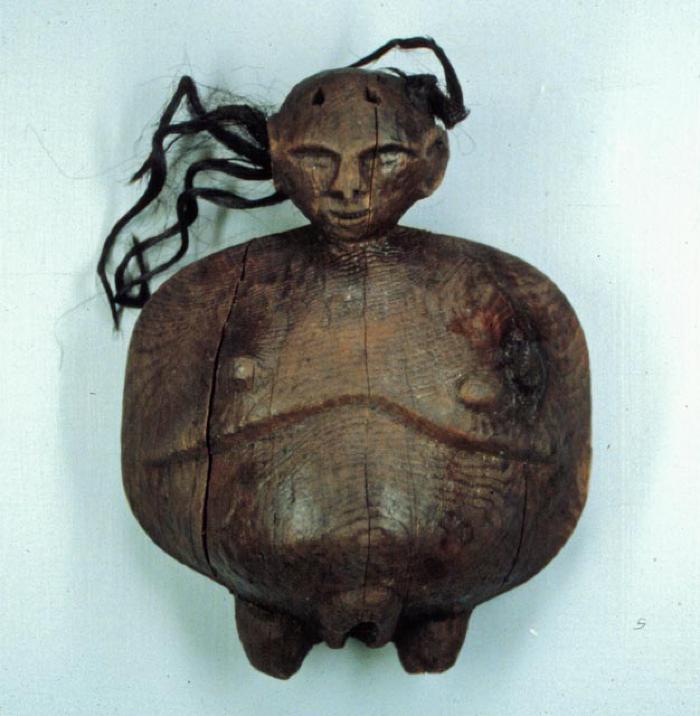Shaman — Kalla’alek, Samanaq

Alutiiq shamans healed the sick, foretold the future, controlled the weather, and recounted events in far-off places. They acted as intermediaries between the human and spirit worlds, fulfilling the dangerous task of communicating with animals, ancestors, and supernatural beings. Shamans could turn themselves into animals or send their souls to find lost people.
Contact with the spirit world was achieved through trances and with the use of special gear, including shamanic masks and dolls. Dolls could be sent away to perform tasks, or carved in the likeness of an individual to cause harm or manipulate a person’s behavior.
Both men and women could become shamans, and shamanic powers often ran in families. An aspiring shaman acquired his or her spirit by walking for many days. The spirit entered a novice’s body and taught him the secrets of the trade. Once the spirit was obtained, the shaman might hear its voice in the cry of a bird or be approached during his or her daily life. However, not all people who wanted to be shamans got called. Shamans often performed in the evening, dancing and singing as they communicated with the spirit world.
Shamanic practices continued well into the twentieth century. Elders recall their fear of powerful individuals who could heal the sick or cause great harm. People protected themselves with prayer. In the late twentieth century, however, shamanism faded from practice.
Shaman is a Siberian word incorporated into both English and Alutiiq. One of the common Alutiiq words for shaman— samanaq—reflects this derivation.
